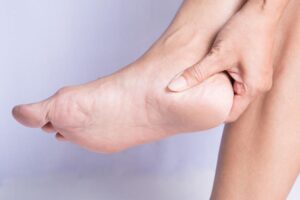Plantar fasciitis is a common and often painful condition that affects the plantar fascia, a thick band of tissue running along the bottom of the foot. It is responsible for supporting the arch and absorbing shock when walking or standing. When this tissue becomes inflamed due to overuse or strain, it can lead to significant discomfort, particularly in the heel area. Recovery from plantar fasciitis can vary significantly depending on the severity of the condition and the treatment approach, but understanding the timeline for healing is essential for managing expectations and ensuring proper care. The time it takes to recover from plantar fasciitis largely depends on several factors. These include the length of time someone has had the condition, the intensity of the pain, their overall health, and how diligently they follow treatment protocols. Acute cases, where the condition has developed recently and has not caused significant damage, typically heal faster than chronic cases, which may have persisted for months or even years.

Age also plays a role. Older individuals often experience slower healing due to decreased blood flow and tissue repair capabilities. Additionally, people who are overweight or have jobs that require long periods of standing or walking may experience prolonged recovery times since the plantar fascia is constantly being strained. In general, most people can expect to recover from plantar fasciitis within 6 to 12 months with conservative treatment. For mild cases, symptoms may improve in as little as a few weeks, especially if the individual reduces their activity levels and adheres to a treatment plan early on. More moderate cases typically resolve within 3 to 6 months, though this may require consistent physical therapy, stretching exercises, and modifications to footwear. In such cases, more intensive treatments such as corticosteroid injections, orthotic devices, or even surgery may be necessary. It is important to note that plantar fasciitis does not resolve quickly, and attempting to return to high-impact activities too soon can result in setbacks and prolong the healing process.
Recovery from plantar fasciitis is often a multi-faceted process that includes a combination of rest, stretching, and strengthening exercises, alongside other interventions aimed at reducing inflammation and pain and read this article history of plantar fasciitis. Reducing activities that put excessive strain on the foot, such as running, prolonged standing, or walking on hard surfaces, is crucial. Rest allows the plantar fascia to heal without additional stress. Specific stretches for the calf muscles and the plantar fascia can improve flexibility and reduce tension in the affected area. Strengthening exercises targeting the muscles of the foot and lower leg also help support the arch and prevent future strain. Wearing supportive shoes with proper arch support can reduce pressure on the plantar fascia. In more severe cases, corticosteroid injections may provide temporary relief from pain and inflammation. Many individuals benefit from working with a physical therapist, who can design a tailored exercise program to strengthen the foot, improve flexibility, and address any underlying issues, such as improper gait or imbalances that contribute to the condition.